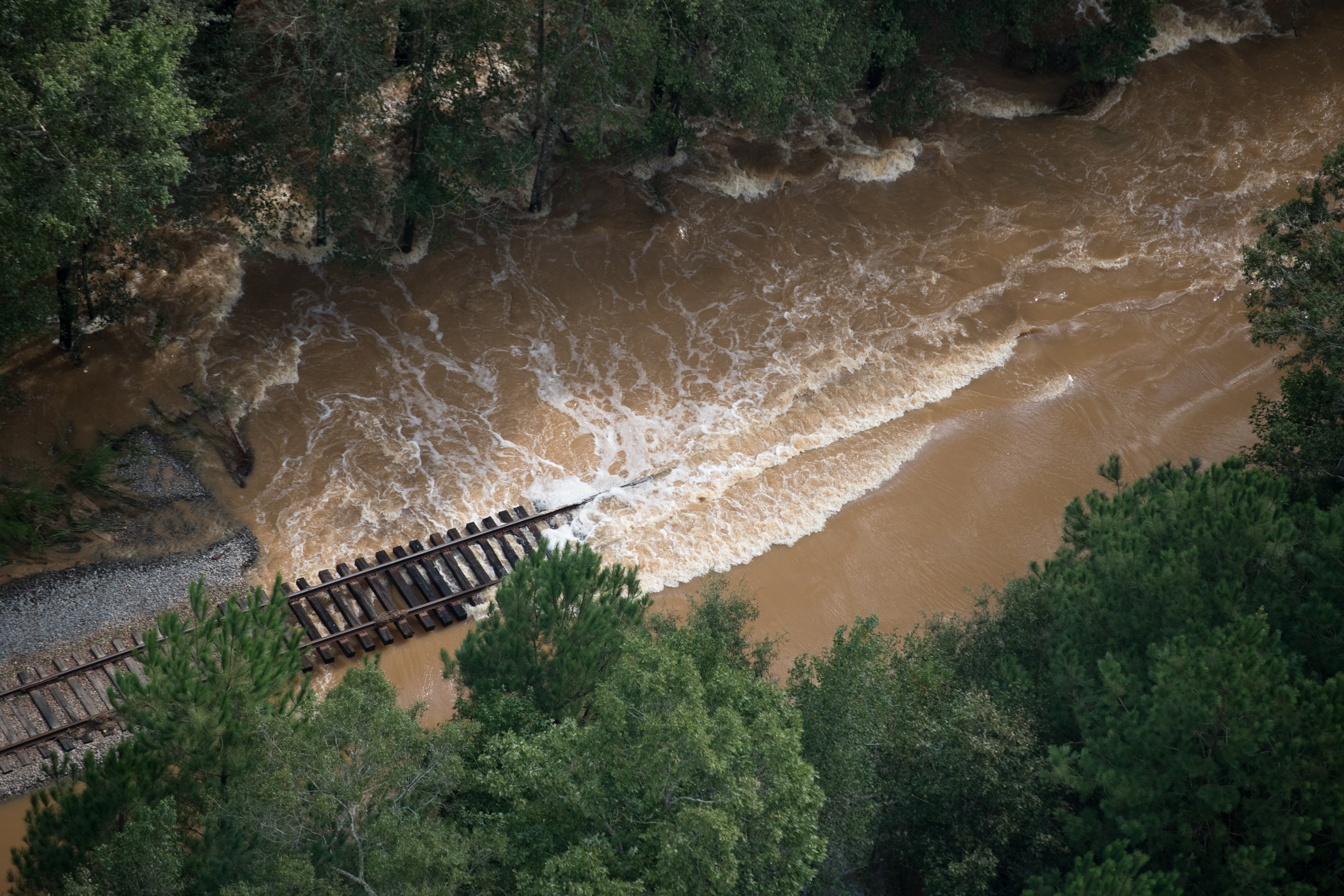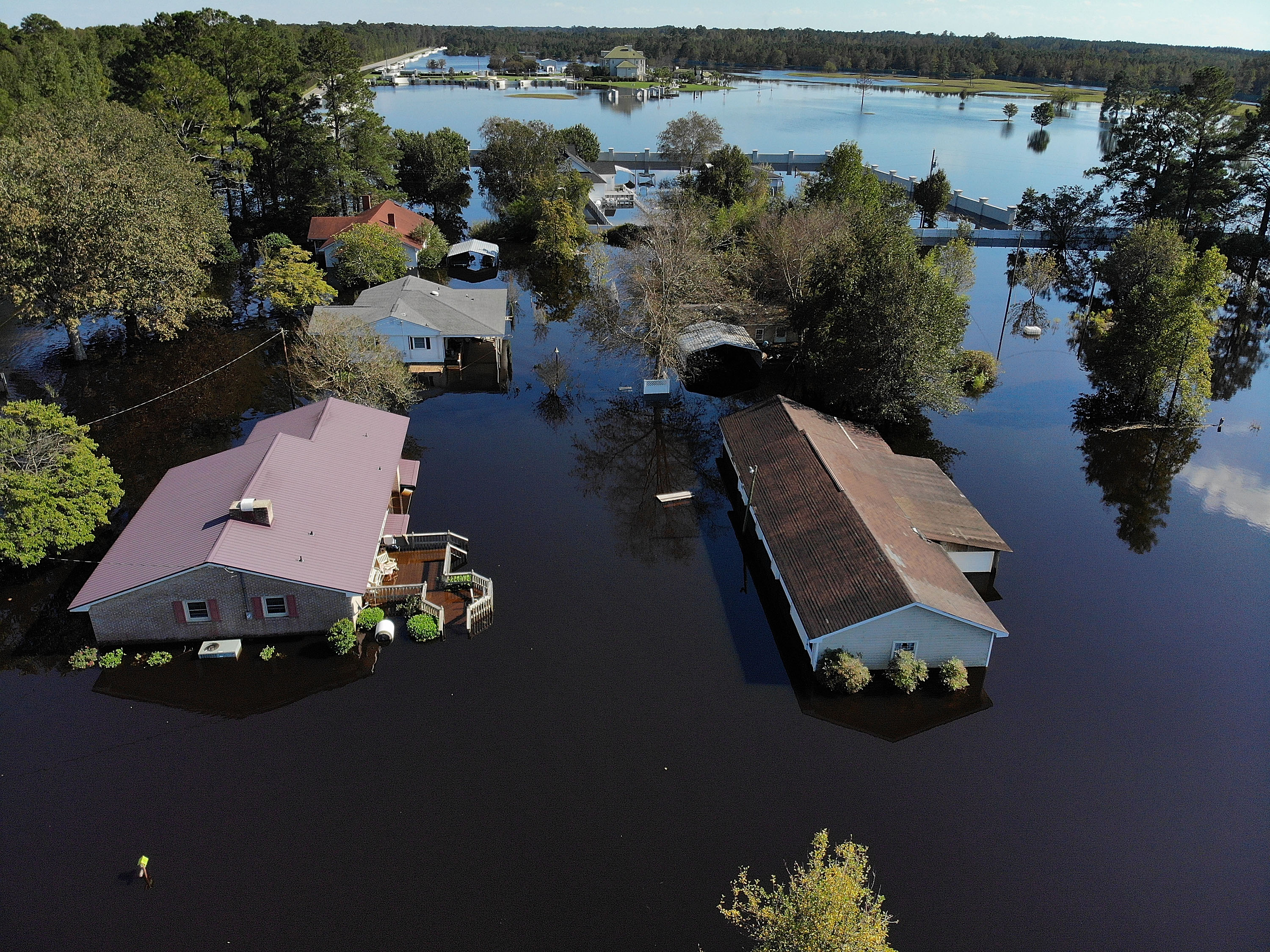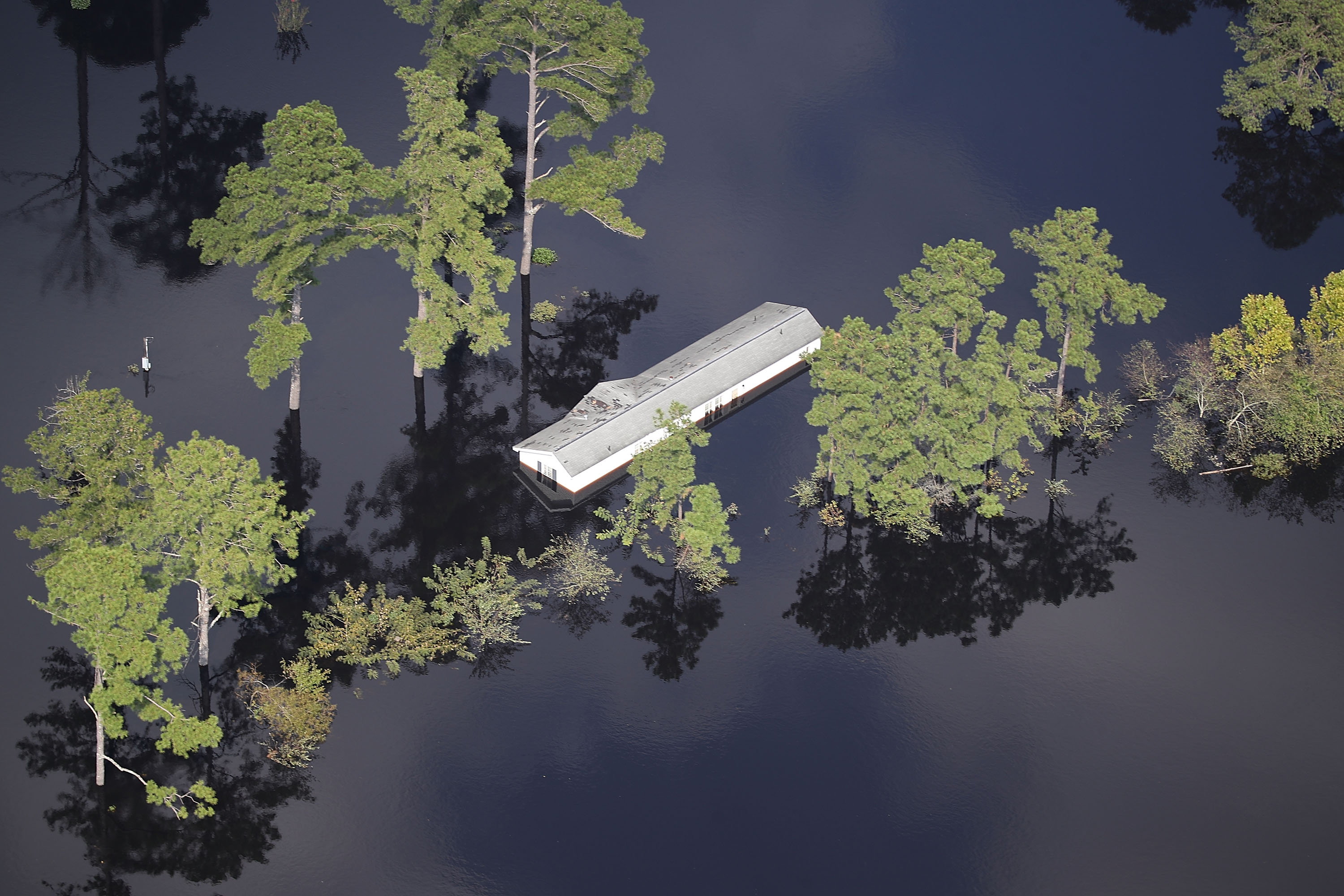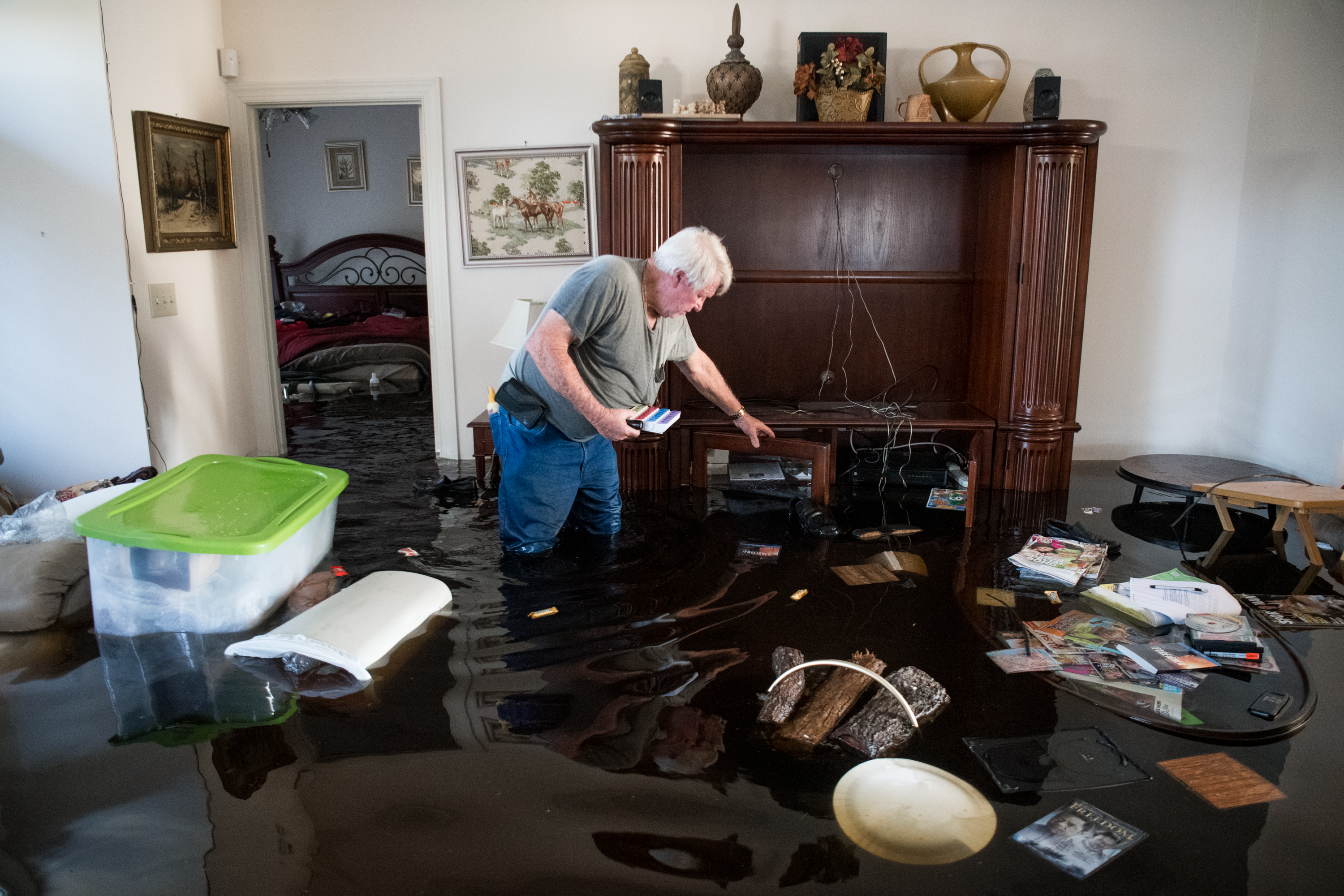As Hurricane Florence moved agonizingly slowly over both Carolinas, the storm dropped trillions of gallons of water, inundating the two states with unprecedented floods. On Thursday, after the hurricane had dissipated, the National Weather Service called the deluge of rainfall a “1,000-year” event. New flood warnings continue to be issued as rivers swell and the wave of water makes its way toward the coast.
As Pacific Standard has reported extensively, the floods have brought more dangers than just fast-moving waters: Open-air hog waste lagoons in floodplains and coal ash dumps have created serious toxic hazards.
As the floods wreak havoc on North and South Carolina, some are calling for hurricane threat warnings to be updated. Even though Florence only clocked in at a Category 1 storm when it made landfall, the category ratings system (known as the Saffir-Simpson scale) considers wind speed as a hurricane’s greatest danger. In the case of Florence, rainfall proved the true hazard. One researcher told the Washington Post that, if Florence had been evaluated holistically, its threat could have been rated a Category 4 or even 5. As of Friday, the death toll stood at 42, but was expected to rise. Millions of animals have also died.
The striking contrast between Florence’s categorization and the damage it caused (and continues to cause) became clear as interstates turned into rivers and rooftops become islands.


(Photo: Joe Raedle/Getty Images)

(Photo: Sean Rayford/Getty Images)

(Photo: Joe Raedle/Getty Images)

(Photo: Joe Raedle/Getty Images)

(Photo: Joe Raedle/Getty Images)

(Photo: Sean Rayford/Getty Images)
More From Pacific Standard on Hurricane Florence
- As Hurricane Florence Approaches, One South Carolina Inmate Says ‘Prisoners Are Extremely Nervous’ About Their Safety
- For North Carolina, Hurricane Florence Could Bring a Financial Reckoning
- North Carolina’s Hog Waste Problem Has a Long History. Why Wasn’t It Solved in Time for Hurricane Florence?
- In South Carolina, Hurricane Florence Puts the Gullah People’s Way of Life in Peril




